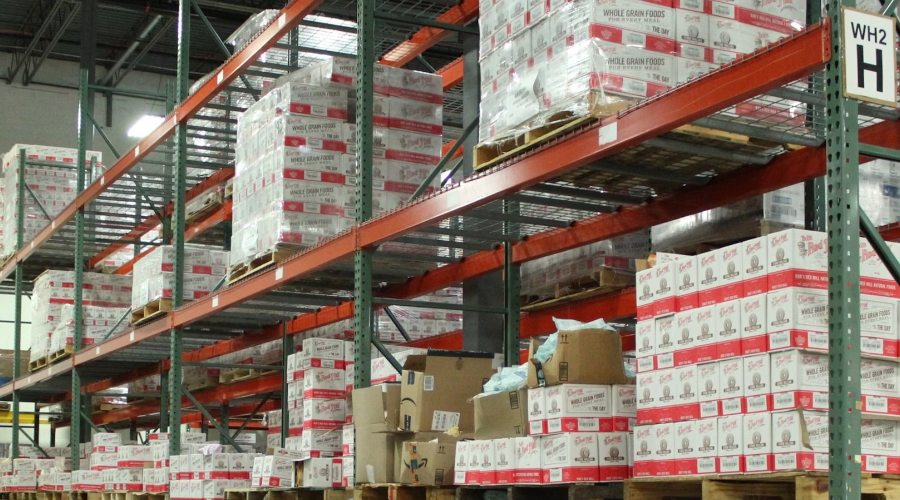Table of Contents
What Is Supply Chain Disruption and How to Deal with It
Time: Sep 27,2024 Author: SFC Source: www.sendfromchina.com
Supply chain disruptions are a growing concern for businesses operating in today’s fast-paced global economy. From natural disasters to political instability, various factors can disrupt the smooth flow of goods, leading to delays, shortages, and increased costs. For e-commerce businesses, this can mean lost revenue and dissatisfied customers.In this comprehensive guide, we will dive into the causes of supply chain disruptions and explore key strategies that businesses can use to build resilient supply chains capable of withstanding unexpected challenges.

1. What Is Supply Chain Disruption
Supply chain disruption refers to unexpected events that interrupt the flow of goods and services within a supply chain. These disruptions can affect any part of the supply chain, including suppliers, manufacturers, logistics providers, and retailers, leading to delays, shortages, or a complete halt in production and delivery.A disrupted supply chain can cripple operations, erode profit margins, and damage relationships between businesses and customers. Given the interconnected nature of today's global economy, even a minor disruption can have cascading effects that are felt across industries and geographies.
2. What Causes Supply Chain Disruption

Natural Disasters
Earthquakes, hurricanes, floods, and wildfires can destroy infrastructure, halt transportation, and disrupt communication lines, making it impossible for suppliers to meet demand or deliver goods on time.Pandemics and Health Crises
The COVID-19 pandemic is a prime example of how a global health crisis can cause widespread supply chain disruption. Lockdowns, travel restrictions, and labor shortages led to production delays and shipment backlogs across industries.Geopolitical Events
Trade wars, sanctions, and political instability can make it difficult for businesses to source materials or ship products across borders. Changing tariffs, embargoes, and regulatory hurdles can further complicate supply chain operations.Supplier Failures
A supplier's inability to meet demand due to bankruptcy, production issues, or poor management can ripple through the supply chain. Relying on a single supplier for critical components increases vulnerability.Logistics Bottlenecks
Transportation issues, such as port congestion, shipping container shortages, or labor strikes, can prevent products from reaching their destination on time. In a tightly scheduled supply chain, even minor delays can create significant disruptions.Cybersecurity Threats
As supply chains become more reliant on digital systems and automation, they also become more vulnerable to cyberattacks. A breach in one part of the supply chain can compromise the entire operation, leading to costly downtime and data loss.Demand Fluctuations
Unexpected surges or drops in demand can strain supply chains. When consumer demand rapidly changes due to market trends, economic conditions, or seasonal factors, businesses may struggle to keep inventory levels aligned with real-time needs.3. How Supply Chain Disruption Impacts E-commerce

3.1 Delayed Deliveries
Consumers expect fast, on-time deliveries, especially with the rise of same-day and next-day shipping. A supply chain disruption can result in delayed shipments, which may lead to order cancellations and customer dissatisfaction.3.2 Stock Shortages
When supply chains break down, e-commerce businesses may face stock shortages, leaving them unable to fulfill orders. This not only impacts revenue but also harms brand reputation, as customers are likely to shop elsewhere if products are consistently out of stock.3.3 Increased Costs
Disruptions can lead to increased costs across the board. From higher shipping rates due to limited capacity to the need for emergency sourcing, e-commerce businesses may face shrinking margins. These additional costs are often passed on to consumers.3.4 Supplier Relationship Strain
As businesses scramble to find alternative suppliers or expedite shipments, relationships with existing suppliers may become strained. Maintaining open lines of communication and fair practices is critical during disruption periods.3.5 Loss of Customer Trust
In the digital age, customer trust is built on reliability and convenience. If customers repeatedly encounter delays or find products unavailable, they may lose trust in the brand, leading to a long-term decline in customer loyalty and lifetime value.4. Strategies to Mitigate Supply Chain Disruption

4.1 Assessing Risk in Supply Chains
Risk assessment is the foundation of disruption prevention. By identifying potential vulnerabilities within the supply chain, businesses can develop contingency plans for addressing issues before they escalate. It involves mapping out the supply chain, identifying critical suppliers, and evaluating their financial health and operational reliability.Key Steps in Risk Assessment:
Supply Chain Mapping: Understanding the entire supply chain from raw materials to the customer.
Supplier Audits: Regularly evaluating supplier performance and reliability.
Scenario Planning: Developing action plans for worst-case scenarios, such as natural disasters or geopolitical conflicts.
4.2 Diversifying Supplier Networks
Relying on a single supplier for critical goods increases the risk of disruption. By diversifying the supplier base and sourcing from multiple suppliers across different regions, businesses can reduce their dependence on any one source. This also provides greater flexibility if one supplier experiences delays or failures.Benefits of Supplier Diversification:
Reduces Supply Chain Fragility: Spreads risk across multiple suppliers.
Increases Flexibility: Allows businesses to switch suppliers if needed.
Improves Negotiating Power: More options allow businesses to negotiate better terms.
4.3 Building Flexible, Resilient Supply Chains
Supply chain flexibility is crucial in responding to disruptions. Businesses should aim to build supply chains that can quickly adapt to changing conditions without sacrificing efficiency.Strategies to Build Flexibility:
Adjustable Lead Times: Implement flexible delivery windows to manage delays.
Buffer Stock: Maintain safety stock levels to mitigate short-term disruptions.
Supplier Relationships: Cultivate strong relationships with key suppliers to ensure priority treatment during high-demand periods.
4.4 Leveraging Technology to Overcome Disruptions
Technology plays a crucial role in mitigating the impact of supply chain disruptions. By leveraging tools such as AI, machine learning, and predictive analytics, businesses can gain real-time visibility into supply chain operations and anticipate potential problems before they arise.Essential Technologies for Supply Chain Management:
Predictive Analytics: Helps forecast demand fluctuations and potential risks.
Supply Chain Visibility Tools: Provide real-time tracking of goods and inventory levels.
Automation: Streamlines operations and reduces the reliance on manual processes, reducing the impact of labor shortages.
4.5 Fostering Strong Supplier Relationships
Building and maintaining strong relationships with suppliers is essential during times of disruption. Open communication, fair practices, and collaboration can help businesses navigate challenges together. Establishing long-term partnerships with key suppliers ensures that businesses remain a priority when disruptions occur.Benefits of Strong Supplier Relationships:
Collaborative Problem-Solving: Suppliers are more likely to work with you to resolve issues.
Priority Access: During periods of high demand, long-standing relationships ensure that your orders are prioritized.
Cost Savings: Trusted relationships can lead to better terms and lower costs over time.
5. FAQs
1. What is a supply chain disruption?
A supply chain disruption is an unexpected event that interferes with the normal flow of goods and services within a supply chain, causing delays, shortages, or other operational challenges.2. How can businesses plan for unexpected disruptions?
Businesses can plan for disruptions by conducting risk assessments, diversifying suppliers, building flexible supply chains, and using technology to monitor and predict disruptions.3. What industries are most affected by supply chain disruptions?
Industries with global supply chains, such as manufacturing, automotive, retail, and technology, are particularly vulnerable. However, disruptions can affect any industry that relies on just-in-time production or timely deliveries.4. How does supply chain disruption affect consumers?
Consumers may experience delays in receiving products, increased prices, and reduced product availability when supply chain disruptions occur.5. What role does technology play in mitigating supply chain disruption?
Technology helps businesses anticipate, manage, and overcome disruptions by providing real-time data, predictive analytics, and automation to ensure smooth operations despite challenges. Post Views:4598
Post Views:4598
Copyright statement: The copyright of this article belongs to the original author. Please indicate the source for reprinting.
Previous Post
What Are the Differences Between Shipping and Freight
Next Post
TAGS
Hot Research
Get a Custom China Fulfillment Solution with FREE Storage for 30 Days
 Want to know about our services, fees or receive a custom quote?
Want to know about our services, fees or receive a custom quote?
 Please fill out the form on the right and we will get back to you within a business day.
Please fill out the form on the right and we will get back to you within a business day.
 The more information you provide, the better our initial response
will be.
The more information you provide, the better our initial response
will be.





 TAGS:
TAGS: